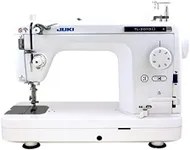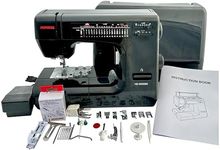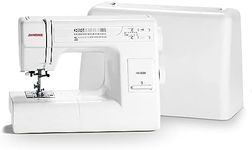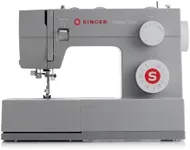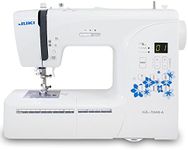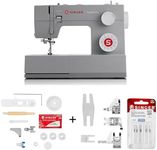Buying Guide for the Best Heavy Duty Sewing Machines
Choosing a heavy-duty sewing machine is all about matching the machine’s capabilities to the types of projects you plan to tackle. Heavy-duty machines are designed to handle thicker fabrics, longer hours of use, and more demanding tasks than standard sewing machines. Before you buy, think about the materials you’ll be sewing, the frequency of your projects, and any special features you might need. Understanding the key specifications will help you find a machine that’s reliable, efficient, and comfortable for your workflow.Motor PowerMotor power refers to the strength of the sewing machine’s engine, usually measured in amps or watts. This is important because a more powerful motor can handle thicker fabrics like denim, canvas, or leather without slowing down or overheating. Lower-powered motors are suitable for light to medium fabrics, while mid-range motors can handle most home projects. For frequent use with heavy materials, look for machines with higher motor power, as this ensures smoother operation and longer lifespan.
Stitch OptionsStitch options indicate the variety of stitches the machine can perform, such as straight, zigzag, and decorative stitches. While heavy-duty machines often focus on utility rather than variety, having a selection of basic stitches is important for versatility. If you mostly do repairs or simple projects, a few essential stitches will suffice. If you want to experiment with different techniques or finishes, look for a machine with more stitch options.
Frame ConstructionFrame construction describes what the machine’s body is made of, typically metal or plastic. A metal frame is crucial for heavy-duty use because it provides stability, reduces vibration, and increases durability. Plastic frames are lighter but may not withstand frequent or intense use. If you plan to sew thick materials or use the machine often, a metal frame is the best choice for longevity and performance.
Sewing SpeedSewing speed is measured in stitches per minute (SPM) and tells you how fast the machine can sew. Higher speeds are useful for large projects or professional work, while lower speeds offer more control for detailed tasks. Beginners or those working on intricate projects may prefer machines with adjustable speed settings. If you need to complete projects quickly or work with long seams, a higher maximum speed will be beneficial.
Presser Foot Pressure AdjustmentPresser foot pressure adjustment allows you to change how firmly the presser foot holds the fabric. This is important when working with different fabric thicknesses, as too much pressure can damage delicate fabrics and too little can cause uneven stitching on thick materials. If you plan to sew a variety of fabrics, look for a machine with this feature to ensure smooth feeding and consistent results.
Needle Penetration PowerNeedle penetration power refers to the machine’s ability to push the needle through thick or multiple layers of fabric without skipping stitches. This is especially important for heavy-duty sewing, as weak penetration can lead to poor stitch quality or broken needles. If you often sew heavy fabrics or multiple layers, prioritize machines known for strong needle penetration.
Feed SystemThe feed system moves the fabric under the needle as you sew. A robust feed system is essential for heavy-duty machines to ensure even, consistent stitching, especially on thick or slippery materials. Some machines offer enhanced feed mechanisms or walking feet for better control. If you work with challenging fabrics, look for a machine with a strong, adjustable feed system.
